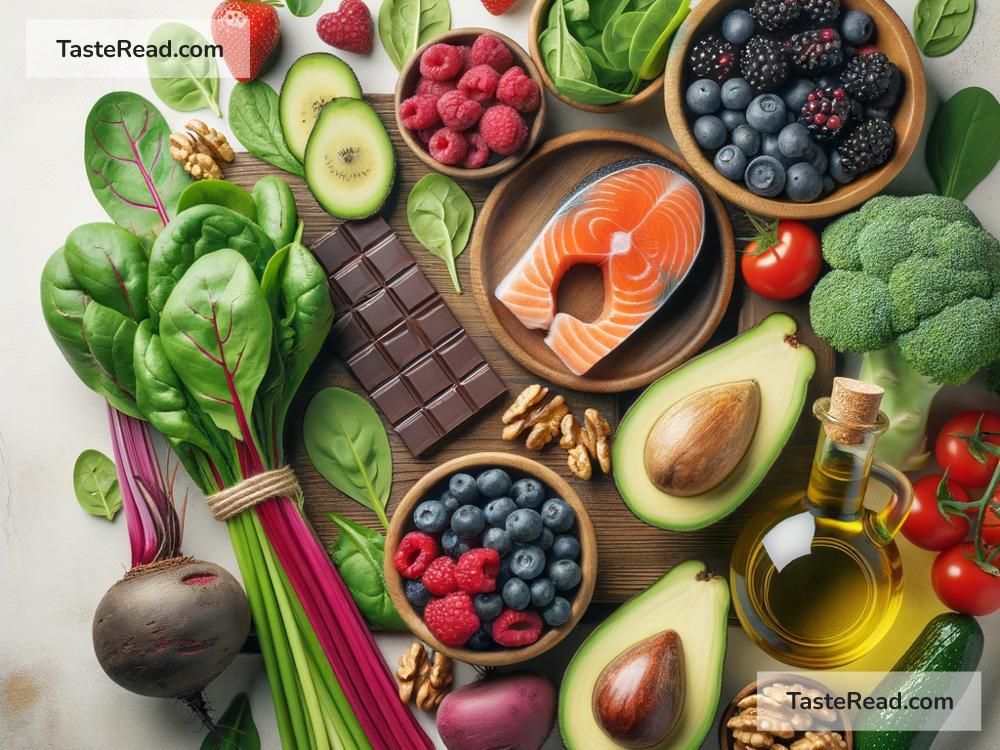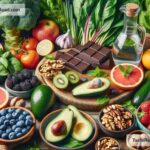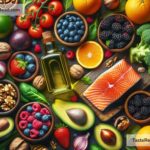Boost Vascular Health with Simple, Delicious Foods
Your blood vessels are like highways, carrying nutrients and oxygen throughout your body. If these highways are damaged or weak, you might face issues like high blood pressure, heart disease, or strokes. Improving vascular integrity—how strong and healthy your blood vessels are—is something you can work on with small changes in your diet. The good news? Some of the tastiest foods can help you build healthier blood vessels!
In this article, we’ll explore simple, affordable foods that support vascular health so you can feel better, stay active, and protect your heart. Let’s dive in!
What Is Vascular Integrity?
Before we discuss food, let’s quickly explain vascular integrity. Your blood vessels include arteries, veins, and capillaries. For these networks to stay strong, they need a smooth lining (called the endothelium) and good elasticity (so they can expand and contract to control blood flow). When the vessels are damaged or clogged, blood struggles to move freely, leading to health risks like inflammation, poor circulation, or cardiovascular disease.
The key to better vascular health is eating foods packed with nutrients like antioxidants, vitamins, fiber, and healthy fats that reduce inflammation, improve blood flow, and strengthen vessel walls.
Top Foods for Vascular Health
1. Leafy Greens (Spinach, Kale, Arugula)
Leafy greens are superstars for your blood vessels. They’re rich in nitrates, which your body converts into nitric oxide—a compound that relaxes blood vessels and improves circulation. They also contain potassium and magnesium, which lower blood pressure and reduce strain on your heart.
How to Eat Them:
– Toss spinach or arugula into salads.
– Blend kale into smoothies.
– Sauté greens with garlic and olive oil for a quick side dish.
2. Berries (Blueberries, Strawberries, Raspberries)
Berries are loaded with antioxidants called anthocyanins that protect blood vessels from damage caused by oxidative stress. These sweet treats also improve flexibility in your arteries and may lower bad cholesterol levels.
How to Eat Them:
– Add berries to yogurt and oatmeal.
– Enjoy them as a snack or dessert.
– Blend them into refreshing smoothies.
3. Fatty Fish (Salmon, Mackerel, Sardines)
Fatty fish are an excellent source of omega-3 fatty acids, which reduce inflammation and prevent plaque buildup in arteries. Omega-3s also improve the elasticity of your blood vessels, keeping them healthy and resilient.
How to Eat Them:
– Grill salmon for dinner.
– Add canned sardines or mackerel to salads or sandwiches.
– Include fish oil supplements if you don’t love seafood (but talk to your doctor first).
4. Citrus Fruits (Oranges, Grapefruits, Lemons)
Citrus fruits are packed with vitamin C, a powerful antioxidant that keeps vessel walls strong. They also help reduce inflammation and improve blood flow. Plus, their natural sweetness makes them an enjoyable way to boost vascular health!
How to Eat Them:
– Snack on orange slices.
– Squeeze lemon juice over salads or fish.
– Make a refreshing grapefruit juice.
5. Nuts and Seeds (Almonds, Walnuts, Flaxseeds, Chia Seeds)
Nuts and seeds are full of healthy fats, fiber, and omega-3s, which reduce inflammation and improve cholesterol levels. They also contain magnesium, a mineral that relaxes blood vessels and promotes better circulation.
How to Eat Them:
– Have a handful of almonds or walnuts as a snack.
– Sprinkle chia or flaxseeds on yogurt, smoothies, or oatmeal.
– Use ground flaxseeds in baking recipes.
6. Whole Grains (Oats, Quinoa, Brown Rice)
Whole grains are rich in fiber, which helps reduce cholesterol and prevent plaque buildup in arteries. Fiber also keeps your digestion smooth, which indirectly supports heart health and better circulation.
How to Eat Them:
– Start your day with oatmeal.
– Use quinoa or brown rice as a side dish or base for meals.
– Swap refined grains (like white bread) for whole-grain versions.
7. Dark Chocolate
Yes, chocolate can be healthy! Dark chocolate (at least 70% cocoa) contains flavonoids, which act as antioxidants to improve blood flow and protect vessels from damage. But remember, moderation is key—too much sugar isn’t good for vascular health.
How to Eat It:
– Enjoy a small square of dark chocolate as a treat.
– Add cocoa powder to smoothies for a nutritious twist.
– Use dark chocolate in baking recipes.
8. Garlic
Garlic might not be your first thought for vascular health, but it’s incredibly beneficial. It contains allicin, a compound that helps lower blood pressure and prevents artery stiffening. Plus, garlic adds amazing flavor to your meals!
How to Eat It:
– Mince garlic and add it to stir-fries, soups, or pasta.
– Roast whole garlic bulbs for a creamy spread.
– Use fresh garlic in homemade salad dressings.
Tips for Getting Started
Adding these foods to your diet doesn’t have to be complicated. Start by swapping unhealthy snacks and processed foods with options like nuts, berries, or whole grains. Cook more meals at home with garlic, leafy greens, and fatty fish to make sure you’re getting the best nutrients. And don’t forget to hydrate—water is the ultimate support for healthy blood vessels.
Final Thoughts
Your vascular health is important for keeping your heart strong, your body energized, and your mind sharp. Luckily, improving it can be as simple as eating well—and these foods make that easy and delicious! Whether you’re snacking on berries, enjoying salmon for dinner, or savoring a square of dark chocolate, every small change counts toward a healthier future.
Take care of your blood vessels, and they’ll take care of you. Let your diet pave the way to stronger, happier highways in your body!


